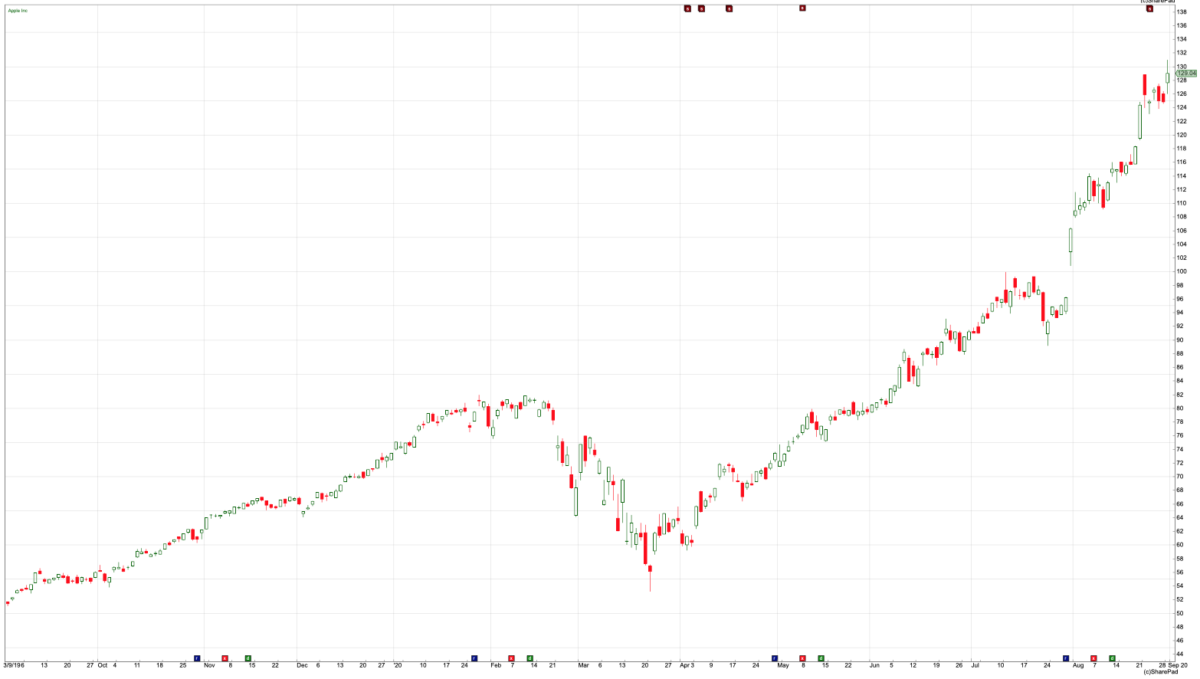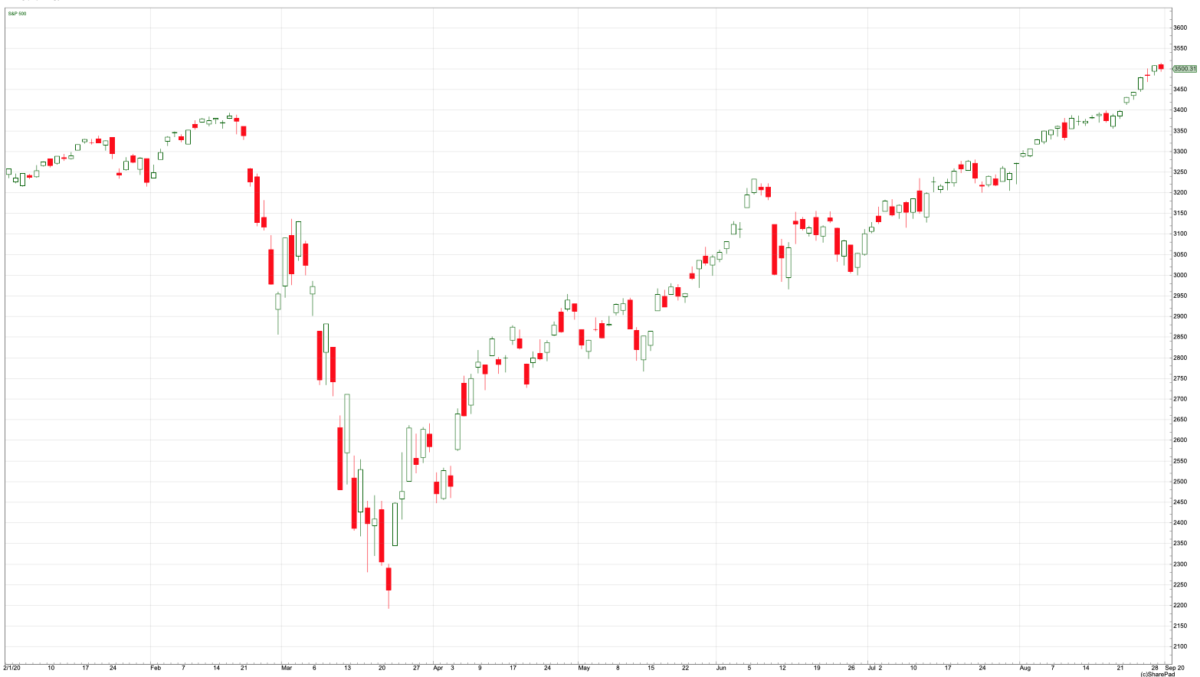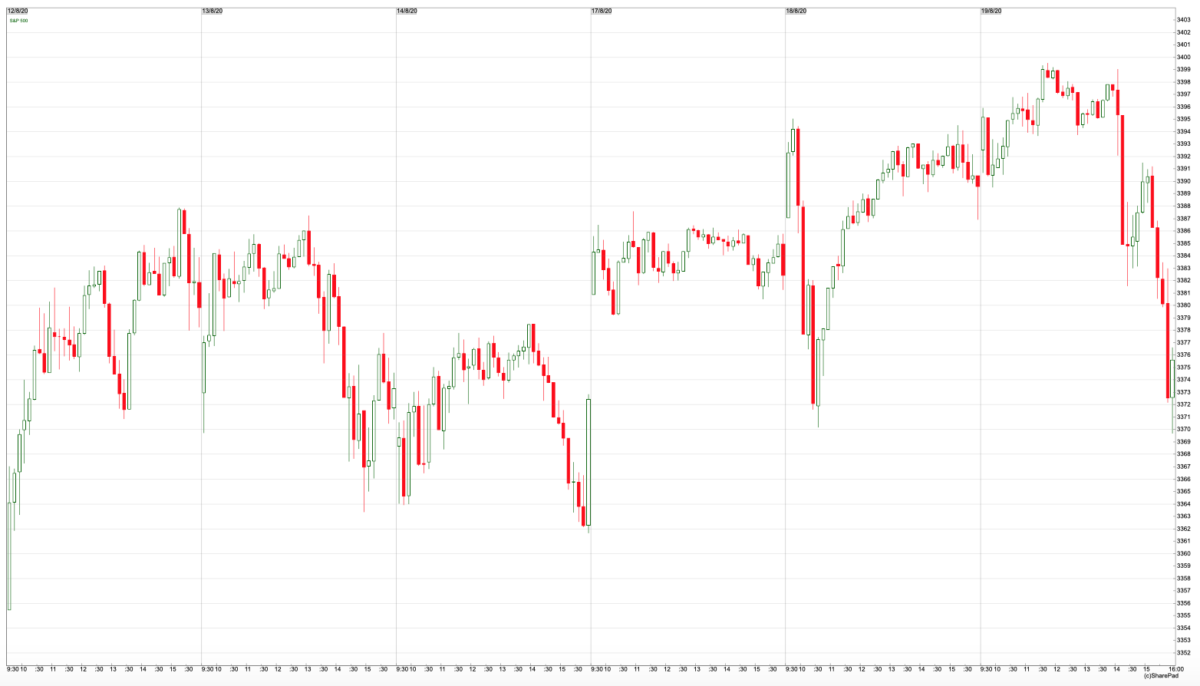Why do most traders lose – and what you can do differently

Why are more than seven out of every ten traders just so bad at it? Veteran trader David Jones explains what you can do to avoid falling in with them.
It is no secret that most traders – whether using spread betting, contracts for difference, spot foreign exchange, futures or some other form of speculation – lose money. Following a change in regulations, many brokers now need to show the percentage of losing clients clearly on their promotional material. Typically, this number is in excess of 70%. So why are more than seven out of every ten traders just so bad at it? Just as importantly, what can you do to avoid falling in with them? I thought it would be useful to address the common issues and come up with some suggestions to improve your own trading.
How hard can it really be?
To the casual observer, trading looks easy. You just buy low and sell high – what’s hard about that? Let’s take a look at a popular share and one company I think we will all be familiar with. Here is the Apple share price history over the past 12 months.
Apple September 2019 to present

Going back to the casual observer, they may be inclined to think, “How could anyone lose money trading or investing, when there are markets and shares out there that do this?” Buying Apple a year ago would have more than doubled your money by now. Buying in the coronavirus-driven sell-off at the March lows would have had a similar result. With interest rates at near-zero levels, trading looks like free money!
Of course, this is not the case. But it is definitely one of the appeals of trading to many inexperienced people. And this applies regardless of the market – it might be Apple shares as above; the NASDAQ index; the GBP/USD exchange rate; or the price of copper. Whatever your market of choice, it is a common trap for new traders to look at a chart and think how easy it would have been to spot the major moves, place the trade and then just sit back and wait for the money to roll in. The fact that more than 70% lose is of little consideration – after all, we all think we are the exception to the rule, right? Most new traders are in for a rude awakening when they start doing it for real.
We need to appreciate that it is difficult. And if you have never done it before, then it’s important to understand there is going to be a learning curve where you are going to lose money. And that learning curve may last for a very long time. So long in fact that you will probably give up on it at some point! Trading is not all gold Lamborghinis and blingy watches, despite what you may have seen on Instagram. Having a grown-up understanding of the difficulty is one of the more important first steps – and something that will set you apart from many who start with naïve expectations.
Don’t be a busy fool – but do something!
A common mistake revolves around our actions. We can fall into two camps here – and quite often flip-flop between the both of them.
One side of this coin is inaction. At first glance this can be something of a strange one. When we first start trading, we are told to be patient and disciplined and wait for the right opportunity to present itself. This is definitely the correct approach – but many new traders make the mistake of thinking there is an absolutely perfect set-up for a trade with no risk of losing. It is reckoned that something like a third of people who open trading accounts never actually place a trade. Nerves clearly play a part here – putting money at risk in something you have never done before is bound to carry with it a level of stress. But with the likes of spread betting, we can trade at a really, really low level of risk. One of the best ways to learn about the best trading approach that suits our own personality is to actually start doing it and learn from our mistakes. Every journey starts with a single step – but you actually have to take the first step!
S&P 500 – year to date

It has been an exceptional year in markets thanks to the global pandemic. There have been wild swings in markets – the broader US S&P500 stock market index above shows the sort of ride that markets have been on. The recovery off the March lows has felt relentless. But many traders may well have been sidelined, waiting for the perfect opportunity to buy in – which never presented itself. Plenty may have been waiting for a retest of the March low, or a decent pullback, or their moving averages to line up just so. Whatever the reason, they may well have missed out on the strong trend so far. Fear of loss is an important trait to have – but not to the extent that it paralyses you from actually doing anything. The best way to learn is to actually do it and appreciate that trading set-ups are seldom perfect. We have to accept the risk of loss, manage it and act accordingly – otherwise I do think you can never progress in trading if you feel like a deer trapped in the headlights when looking at markets.
The other side of the coin is doing too much! For many people, trading is about sitting in front of multiple screens (at the latest count, I have four because more screens mean more profits, right…?) and clicking away like some sort of whirling dervish, trying to catch every move in the market. Here’s a much shorter-term chart of the S&P 500 to make a point.
S&P 500 intraday chart – 12 – 19 August 2020

Day trading (in and out the same day, no overnight positions) is exciting. But it is probably the hardest approach to markets. Compare the chart above with the earlier chart of the S&P. Riding a bigger trend over days and weeks is easier (I would never say easy) than trying to guess and profit from every twist and turn during the day. But too many think that trading is all about this approach to markets, which really isn’t the case. Don’t be a busy fool – take a look at the bigger picture and trade that.
Embrace risk – but not too much risk!
Assuming our trader has actually placed a trade, another common mistake is to trade too big relative to the funds we have available. Let’s say there is £1,000 in our trading account. If we are taking on trades that risk losing, for example, £300 if an idea doesn’t work out then this is clearly not a recipe for success. This is such a basic bit of maths, but one that many new traders will choose to ignore because “the rules don’t apply to me”. Congratulations on seeing yourself as a trading maverick, just like almost every other trader!
The cold hard truth is that everyone has a string of losing trades from time to time so it is important to trade at a level that means when this inevitably happens, it will not wipe out your trading account. Clearly in the example above you are risking losing 30% of your trading account on one idea. If three of these go wrong in a row then it is going to take a Herculean effort, against massive odds, to get back to where you started. Most professional traders only risk a small fraction of their money on any one idea – typically 1-3%. Trading is not a “get rich quick” activity. You would be wise to trade small to ensure your long-term survival in the market.
Profits and losses turned on their heads
Studies have shown that one of the biggest reasons why losing traders lose is because they take profits too quickly – and conversely, they let their losses mount up. If your strategy makes a profit of £50 when you are right, but loses £100 when you are wrong, once again it does not take a mathematical genius to figure out which way the balance of your account is probably going to go. Successful strategies will usually pinpoint trades that have a profit potential that is a multiple of the potential loss. Most successful traders will aim for a profit of at least 2-3 times the potential loss – they want to try to stack the odds in their favour when trading. If you are dependent on being right an awful lot of the time when trading, just to break-even, then this is a common mistake that you should spend some time trying to avoid.
This is just a snapshot of some of the more common trading mistakes that we want to avoid. An easy way of seeing if you are making them is to keep a trading diary. Write down the reasons for the trade and attach a chart. Regularly reviewing this will help to flag up if you are making the same mistake repeatedly – and be a real boon when it comes to avoiding them in the future.

Comments (0)